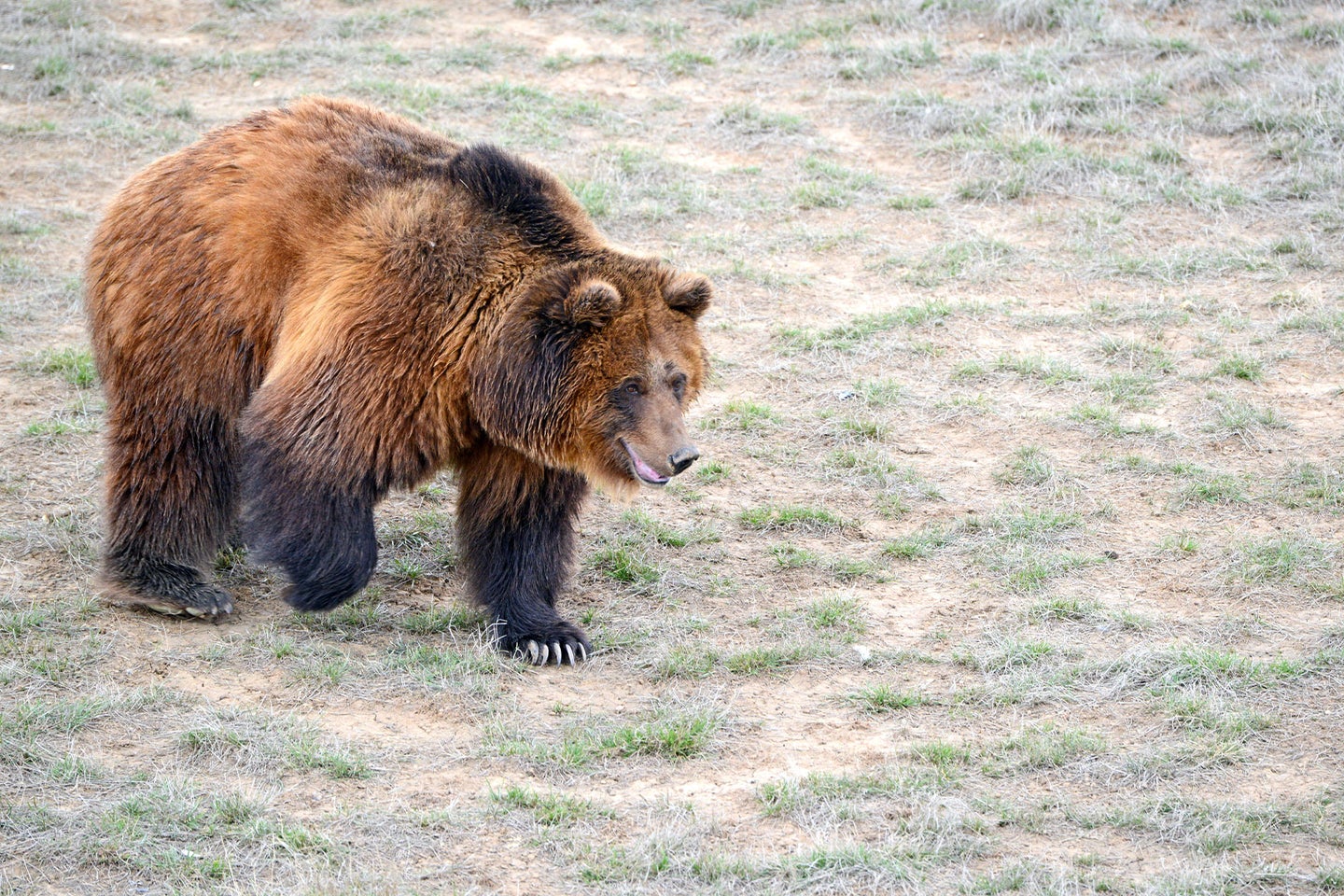Feds Outline Plan to Move Grizzly Bears Into Northwest Washington State

There are two separate grizzly bear recovery zones in Washington State. Adobe Photostock.
On Thursday, April 25, the National Park Service (NPS) and the U.S. Fish & Wildlife Service (USFWS) announced plans to capture grizzly bears from established populations in the Lower 48 and Canada and release the animals on public land in northern Washington. With its “Grizzly Bear Recovery Plan” now in place, the federal government will move to transplant three to seven grizzlies in the North Cascades Mountains once a year for the next five to ten years. The impending plan is part of a long-term goal to reestablish a breeding population of some 200 grizzly bears in the area within 60 to 100 years.
In its plan, the Department of the Interior (DOI), which oversees both NPS and the USFWS, said wildlife techs will capture grizzlies from multiple source populations, and they’ll focus on capturing bears that have no known history of conflict with humans. “Only independent grizzly bears will be candidates for reintroduction,” the DOI states, adding that grizzlies “grizzlies will be captured using culvert traps.”
Once introduced, Northern Cascade area-grizzlies will be protected under the Endangered Species Act (ESA) but with one important exception: They’ll be considered a nonessential experimental population and thus subject to the special rules of the so-called 10(j)rule. That means they can be killed in certain cases involving self defense and other types of human-bear conflict. The 10(j) exception also allows for the incidental take of grizzly bears without prosecution—”provided such take is unintentional and not due to negligent conduct, related to an otherwise lawful activity, and promptly reported to the USFWS,” the plan reads.
Read Next: Wolf Management Might Be Keeping Woodland Caribou from Going Extinct in Canada, Study Suggests
Catch and Release
The plan goes on to state that the capture and release of grizzlies “will generally occur between June and September depending on the seasonal conditions of the site and abundance of food in the release areas,” though it doesn’t specify what year the capture and release program will officially begin.
USFWS.
The grizzly bears will be transported from capture sites via truck and trailer to staging areas on non-wilderness lands large enough for the safe landing of a helicopter. From the staging areas, a captured grizzly will be loaded onto a helicopter and flown into a release site, likely on NPS property but possibly on U.S. Forest Service land “if unforeseen circumstances prevent access to [potential] NPS release sites.”
The Lower 48 has six different Recovery Zone as defined by the U.S. Department of Interior. Those include the Greater Yellowstone Ecosystem, the Northern Continental Divide Ecosystem, the Cabinet Yaak Ecosystem, the Selkirk Ecosystem, the Bitterroot Ecosystem, and the North Cascade Ecosystem. The recovery areas lie within the boundaries of four Western states: Idaho, Montana, Wyoming, and Washington. The DOI is also considering transplanting grizzlies into the Bitterroot Ecosystem of western Montana and northeaster Idaho, but that plan hasn’t been finalized.
Read Next: Wolf Management Might Be Keeping Woodland Caribou from Going Extinct in Canada, Study Suggests
The North Cascades Ecosystem spans the crest of Washington’s Cascade range, from temperate rain forests on the range’s western end to drier ponderosa pine savannas and sage brush steppes in the east. According to the DOI, grizzly bears once occurred throughout the region.
Some Hunters Oppose the Plan
The agency said it considered input from local tribes, the scientific community, and the general public before finalizing its decision to truck and fly grizzlies into the north Cascades. Since October—when the DOI announced that it was considering the move—multiple hunting advocates have told F&S that they oppose the measure.
“It’s irresponsible considering the state of affairs at the Washington Fish & Game Commission and how poorly they’re managing large carnivores as it is,” said Joe Kondelis of the American Bear Foundation during a recent interview with F&S. “And from a federal perspective, we should focus on the grizzly bears we have and the issues we have with those populations before we start expanding into new places.”
Charles Whitwam is the co-founder of Howl.org, a group that advocates and organizes hunters in the face of anti-hunting legislation and policy changes. He expressed similar sentiments in an October call with F&S, when the DOI was still mulling different alternatives for grizzly recovery in the North Cascades.
“I have no problem with grizzly bears being where they should be,” Whitwam said. “What I do have a problem with is bringing them into a state with a proven inability to manage bears alongside other big game species—and Washington is certainly one of those states.
It looks like they’re going to try to reduce cougar seasons. They’ve already eliminated Spring bear season, and there’s been talk of reducing all black bear hunting. Bringing in additional grizzly bears, more than are already living inside established populations in Washington, just doesn’t seem like a good call.”
The post Feds Outline Plan to Move Grizzly Bears Into Northwest Washington State appeared first on Field & Stream.
Articles may contain affiliate links which enable us to share in the revenue of any purchases made.
